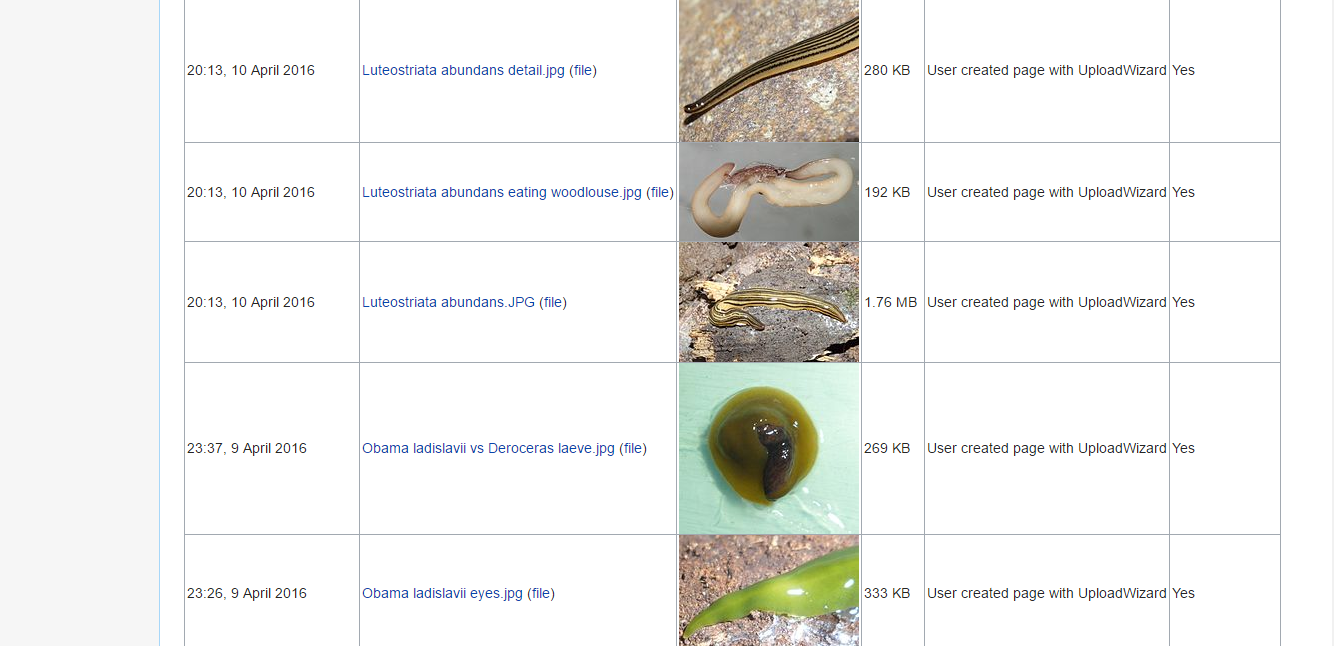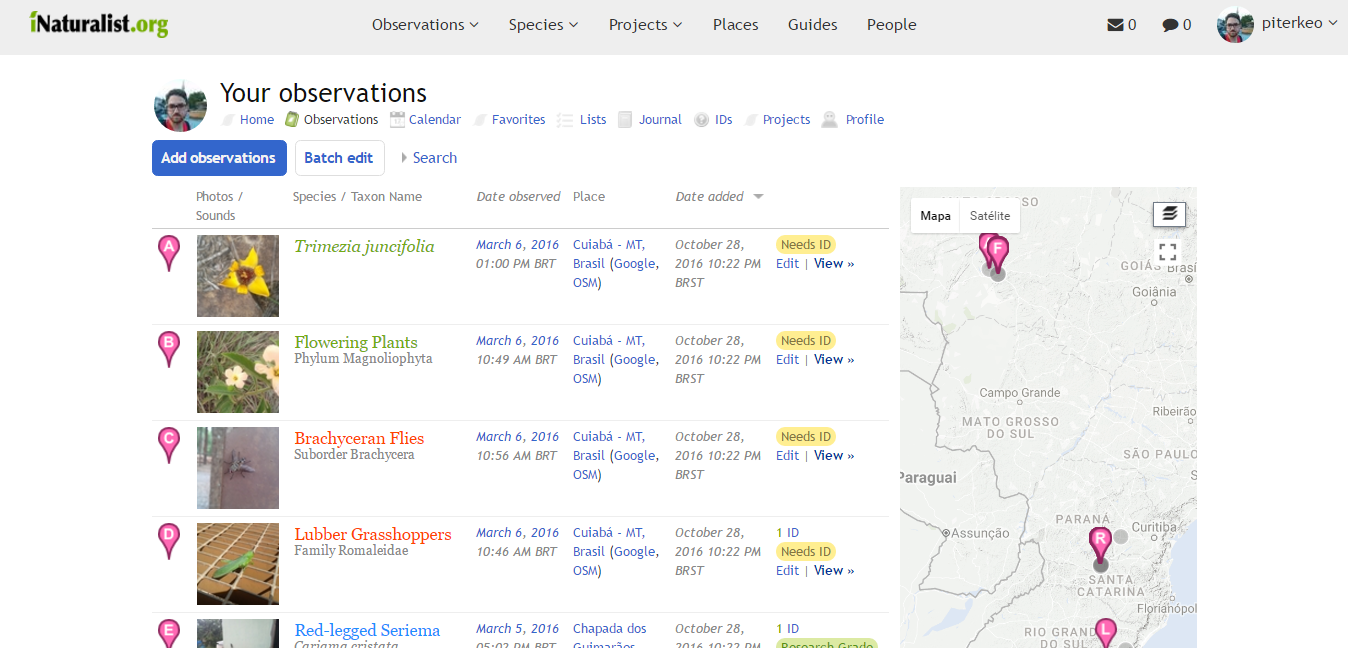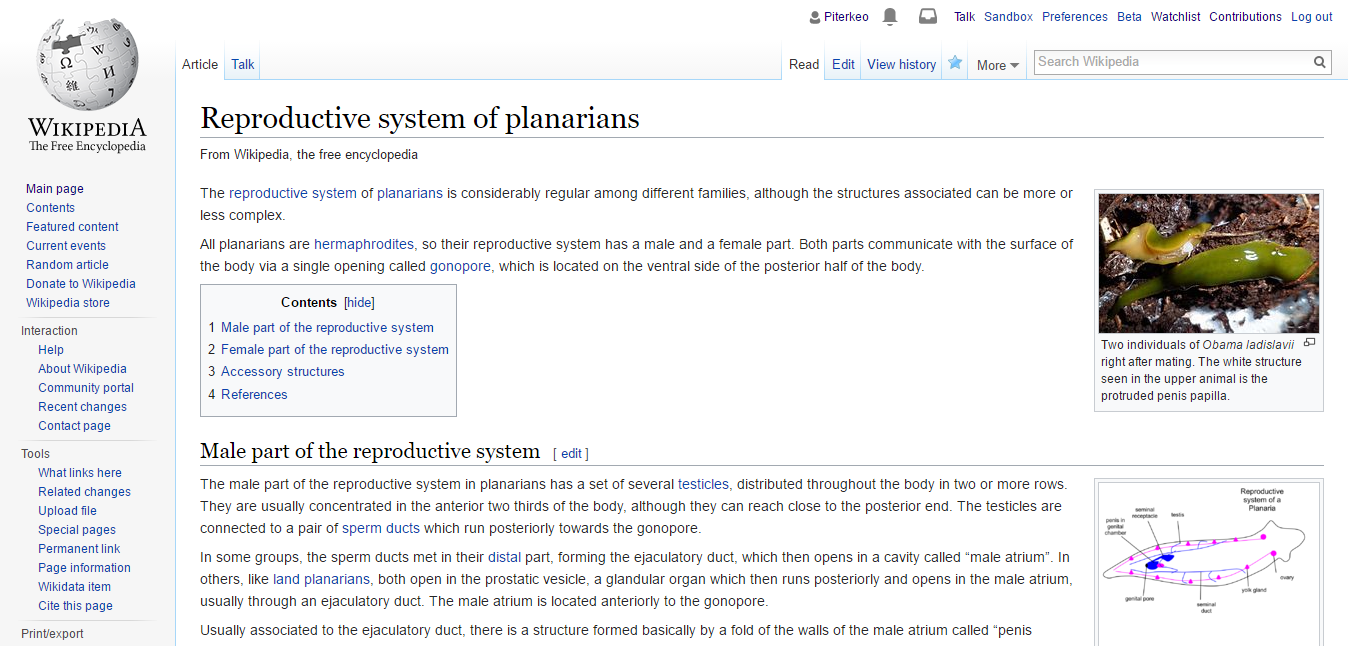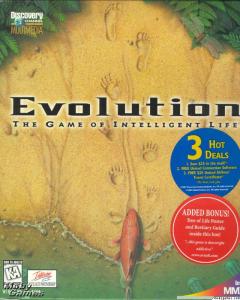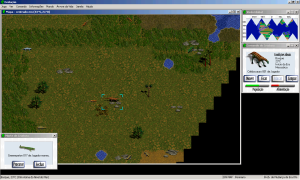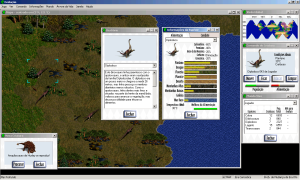by Sheila C.
Hey there, Earthling! I felt like posting something special for the blog, but since we’re still a few months away from our 10th anniversary, I’ll just do it now; today I bring a special article about a special subject: Speculative Evolution. For those who are unfamiliar with what this is, it’s simply a creative movement that is equal parts art and science, and based on questions such as “how would evolution work if things happened differently?”, “how will life look like millions of years into the future?” and even “what forms will X living being produce in given parameters?”. And while such thought-experiment is done purely for the sake of entertainment, it does provide a fun way to learn and understand how evolution and its processes function and influence life, and one might even say it can allow us to predict what we might encounter in the fossil record – more on that later!
It’s a field not so dissimilar from exobiology art, of which the focus is imagining life in other planets, and which can be a bit of an anything-goes scenario given the extreme parameters that exoplanets may produce and sheer variety of such in the known cosmos, though in some cases it really depends on how willing the artist is to deviate from the Terran paradigms; in this case, however, we’re specifically talking about alternative evolution routes for Earth’s living beings, either from the past or from the present towards the future, and it’s arguably one of the most alluring movements for creative minds who can’t help but imagine a biosphere of their own design – it’s a very big part of what made the EN group become friends.
Its popularity has gradually grown in no small part due to the works of the Scottish geologist, paleontologist and prolific dinosaur book writer Dougal Dixon, with his famous trilogy of speculative evolution consisting of “After Man: A Zoology of the Future” (1981), “The New Dinosaurs: An Alternative Evolution” (1988) and “Man After Man: An Anthropology of the Future” (1990), later as well working as consulter and creature designer for the later TV series “The Future is Wild” (2002), which was responsible for the resurgence of interest in this area by bringing a relatively more up-to-date take on the subject. With the growing presence of the internet at the time, Speculative Evolution flourished to create a fandom of its own sometime around the mid-2000s.
The result of this fanatical writing made a text so long that I decided to make it into a three-parter special:
-The first part, which you’ll read in this post, will tell you about the works that first explored the theme – most in passing – and were released before After Man.
-The second part focuses solely on Dougal Dixon’s trilogy of After Man, The New Dinosaurs, and Man After Man, and marked the de facto birth of Speculative Evolution as a genre since they were the first purposely-made works on the subject available to a global-scale public.
– The third part will talk about the works that came after Dixon’s trilogy and were influenced by it, primarily The Future is Wild, as well as more recent takes on the subject, and what the future might hold for the genre.
So with all that said, let’s explore where all of this comes from, going back to the very birth of evolutionary thought:
-Darwin’s ponders on the speculative evolutions of the bear (and fish)
This may come as a surprise to some, but Charles Darwin himself, the father of modern biology and evolutionary science, and the one who proposed the concept of natural selection and the gradual change of species through time, was one of the first scientific minds to write about the core concept of speculative evolution in some shape and form.
In the first edition of his well-known book “The Origin of Species” (1859), Darwin describes the following:
“In North America the black bear was seen . . . swimming for hours with widely open mouth, thus catching, like a whale, insects in the water. Even in so extreme a case as this, if the supply of insects were constant, and if better adapted competitors did not already exist in the country, I can see no difficulty in a race of bears being rendered, by natural selection, more and more aquatic in their structure and habits, with larger and larger mouths, till a creature was produced as monstrous as a whale.”
This excerpt was removed from the second edition due to the controversial nature of the statement, as many scoffed at the idea of a bear becoming a whale (which is, of course, absurd, since they evolved from hoofed mammals); however, this suggests that Darwin thought of how evolution, as a factual process and in an out-of-the-box approach, could, if given enough time and with the proper set of circumstances, cause a modern animal to become a fictional species with an entirely new appearance and lifestyle. That in itself is the basis of speculative evolution, and as far as anyone is concerned, it may very well be the first account of such, unlike the erroneous notions of the Lamarckian theory.

Furthermore, Darwin also pondered on the same process applied to the development of the flying-fish into becoming a creature capable of true flight. If it sounds too familiar a description, don’t worry, we’ll look into it later on:
“Seeing that a few members of such water-breathing classes as the Crustacea and Mollusca are adapted to live on the land, and seeing that we have flying birds and mammals, flying insects of the most diversified types, and formerly had flying reptiles, it is conceivable that flying-fish, which now glide far through the air, slightly rising and turning by the aid of their fluttering fins, might have been modified into perfectly winged animals. If this had been effected, who would have ever imagined that in an early transitional state they had been inhabitants of the open ocean, and had used their incipient organs of flight exclusively, as far as we know, to escape being devoured by other fish?”
While the idea of strange and unusual creatures inhabiting the world has always been commonplace in human culture since ancient times, they always had a fantastic and magical aspect to them, often outright breaking the laws of physics and biological understanding, which is a radically different approach of imagining life from the point of view of speculative evolution, which roots its principles on factual processes to produce fanciful life forms but with a depth of truth to them.
It’s also worth noting that creationism was the prevalent model even for scientific fields in Darwin’s time: for paleontology at its infancy, the concept of a world millions of years old, if not billions, was unfathomable, and the skeletons of creatures long gone were thought to be that of “antediluvian” monsters that inhabited the planet along with humans and regular modern animals and where correlated to the biblical mythological beasts, and contributing for such idea is the fact that their bones were frequently found buried in sedimentary rocks, suggesting they were buried by such events like a worldwide flood. This vision was challenged only after Darwin’s ideas were published and science began to be more objective, separating itself from religious views in the search for evidence to understand the natural world and its history.

Even after the notion of extinction broke free from the stigma of going against the image of an infallible creator figure, for a time science proceeded shyly to try and explain the strange creatures analyzed and the absurd picture they painted in a reasonable manner, as the fossil record of the time didn’t provide a very clear idea of what had transpired in our world in ages past. As more and more material was found and established the progression of how living things evolved and had gone extinct, science was able to produce a much more familiar timeline for the modern reader in the early 20th century and understand how certain creatures came to be – even us.
-Early speculative evolution ideas with H. G. Wells
The classic book by the British writer H. G. Wells, “The Time Machine” (1895), can be considered what sprung the entire idea of time travel, as well as life developing after the present day to the wider media – even Dixon himself cites this work as being the inspiration behind After Man.
Other than the prominent Eloi and Morlocks, both having evolved from modern day humans hundreds of thousands of years after modern times, the book also describes a few other creatures which are a bit tame by today’s standards in sci-fi settings: the world 30 million years hence is apocalyptical, covered in lichens and inhabited by giant arthropods similar in appearance to crabs, butterflies and nautiloids.
Yet, due to the narrative nature of the work, there’s not much objective approach to the life forms described: the human descendants do possess physical and behavioral differences from their ancestors, but the circumstances that brought about these changes are superficial and seemingly included as a literary device for social commentary (that is, considering the material from the prequels, which detail the exact origins of the Eloi and the Morlocks), and the creatures from the far future seem to be created rather for shock value than any objective rationalization of why and how these forms came into existence (furthermore, material removed from the original and later on added again mention some more forms, and seemingly indicate that the creatures seen in the far future are in fact the descendants of the Morlocks and Eloi).
That’s not to discredit the notion of life existing million of years into the future being established, even if it does seem much grimmer than what most would consider for a scenario that “near” into the future nowadays, being something more suitable to several hundred million years in modern speculative evolution, and regardless it is a pretty good bet that creatures of arthropod characteristics would rule the world the further one travelled towards the future.
Just, you know, they wouldn’t be evolved from humans.
“The Time Machine” had, of course, various film adaptations, some of which actually removed much of the speculative elements in the original or otherwise didn’t give it a lot of attention, most glaringly the Eloi being portrayed as regular people in stature and appearance as opposed to their Hobbit-esque incarnations from the books (though it’s perfectly understandable why they changed it).
– More ideas of future evolution for humans with Olaf Stapledon
While the idea of humanity evolving into new species was already introduced with “The Time Machine”, a more elaborated take on the subject, if a more fantastic one, was presented with British philosopher and sci-fi writer Olaf Stapledon’s book, “Last and First Men” (1930), which chronicles the future of humanity in the span of 2 billion years.
As you can imagine, the sci-fi aspect has a pretty heavy influence on the concept given the unreasonable amount of time covered and the future humans varying greatly in appearance – one being a gigantic brain, while another is shaped like a bat – and some very early use of the idea of genetic engineering being employed. Sadly, the species featured weren’t illustrated as frequently as the ones from H. G. Wells’ work.
And while the book was a great success upon release and has had a lasting impact in the sci-fi, its Speculative Evolution side seemingly didn’t receive much attention, with the core idea of human evolution only resurfacing in force 60 years later with “Man After Man”, and to this day it’s one of the less explored scenarios of the field, although it does come up from time to time.
It’s also a work I haven’t heard about until recently so I don’t have a lot to say about it, but it’s intriguing to think that the subject was a already a thing, and in the 30s of all things.
– The Rhinograndentia parody
A rather unusual and comical part of speculative evolution history, the snouters, or nasobames, or Rhinograndentia, were created long before the publishing of After Man, by the German zoologist Gerolf Steiner (a most irreverent figure whose actual photos are impossible to find), published as a book entitled “Bau und Leben der Rhinogradentia” (1957) or “The Snouters: Form and Life of the Rhinogrades” in its English translation. The entire concept was inspired by the 1905 poem “The Nasobame”, by German writer Christian Morgenstern, a nonsensical text which describes a creature that walks with its many noses.
The book is basically a literary mockumentary, presenting itself as the official translation of the only remaining document on the now-submerged Pacific archipelago of Hy-yi-yi and its unique fauna by the intrepid zoologist Harald Stümpke. Said archipelago vanished from the map due to an atomic bomb test, which also vanquished all the other researchers on the Rhinograndentia that were holding a meeting in one of the islands at the time of the catastrophe.
Despite the comedic nature of the work, Steiner was able to create a rather convincing plethora of life forms of all shapes and sizes to fill in the archipelago’s unusual ecosystems, applying a great deal of his academic knowledge of zoology to create a fauna that arguably isn’t any weirder than some real animals, and adding to the realism of the work is a bit of jest from Steiner’s part by showing “evidence” of the existence of the Rhinograndentia, with various models of supposedly “stuffed specimens” exhibited at the Wiesbaden Museum in Germany, no doubt confusing and amusing lots of visitors who don’t know any better.
It also helped that Steiner treated them as real, and maintained the ruse un til the end.
Compared to other speculative evolution works, the Rhinograndentia is usually left out of the spotlight most likely due to its lighthearted humor and bizarreness, not to mention its limited release outside of Germany, and maybe because it’s less about actual future or alternative evolution and more of a “lost world” type of fiction, but I still find it worth talking about, especially given the lengths Steiner (which sadly has passed away in 2009) went to make a museum collection of said creatures.
And with that, we reached the end of Part 1! As you can see Speculative Evolution had existed for longer than one would imagine, albeit not identified by this name, but I hope you enjoyed reading on what preceded the works of Dougal Dixon before we tackle them on Part 2!
See you in the next post, and thanks for reading!











